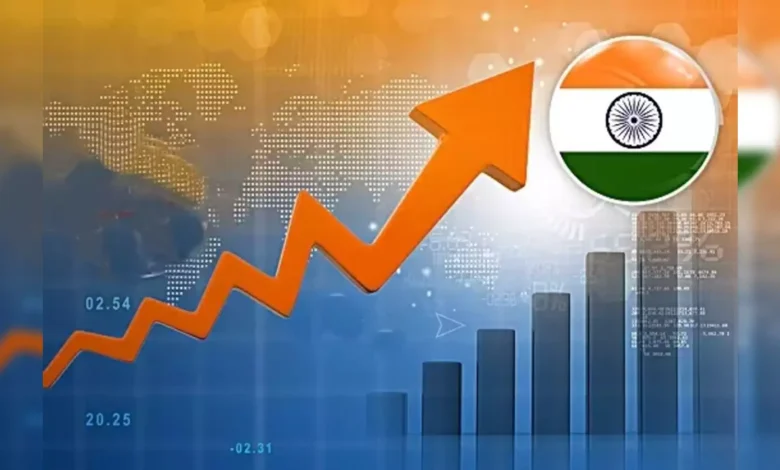India Eyes $7 Trillion Economy by 2030, Anticipates 7% Growth in Coming Years: Report
The report highlights ten years of both big and small changes, making India the 5th biggest global economy with a proud GDP of $3.7 trillion

In a recent report titled ‘Indian Economy — A Review,’ the Union finance ministry projects a bright picture for India’s economy, expecting it to grow by over 7% in the coming years. Ministry said, bolstered by the resilience of its financial sector and ongoing structural reforms, India can aspire to become a $7 trillion economy by 2030. This positive outlook comes just ahead of the presentation of the interim Budget for 2024-25 in Parliament, signaling a promising future.
“In the next three years, India is expected to become the third-largest economy globally, with a GDP [gross domestic product] of $5 trillion. The government aims even higher, aspiring to be a ‘developed country’ by 2047,” reveals the report. While the report doesn’t replace the Economic Survey, it emphasizes the government’s dedication to ongoing economic reforms.
The report highlights ten years of both big and small changes, making India the 5th biggest global economy with a proud GDP of $3.7 trillion (estimated for FY24). Despite facing challenges from the Covid pandemic and pre-existing macro imbalances, India’s economic strength shines through.
“The domestic demand has been a driving force for the economy, leading to a growth rate of over 7% in the last three years,” notes the report. This strength traces back to the reforms and measures taken over the past decade. The government’s policies not only boost demand but also strengthen the supply side through investments in physical and digital infrastructure.
The report predicts a real GDP growth of around 7% in FY25, showcasing India’s resilience against global challenges. Despite conflicts in regions like Ukraine and disruptions in the Red Sea trade, India’s first advance estimates indicate a higher-than-expected GDP growth of 7.3% in FY24.
Looking ahead, the report cites the positive impacts of the 10-year reforms on attracting private investments, including the implementation of Goods and Services Tax (GST), digitization of the economy, technological advancements, and human capital formation. The investment climate is set to become more favorable, with a continued focus on improving the ease of doing business.
The report emphasizes India’s status as the fastest-growing major economy globally, as highlighted by data from international agencies like the International Monetary Fund (IMF) and the World Trade Organization (WTO). Despite a slow global economy, India’s compounded annual growth rate between 2014 and 2019 stood at an impressive 7.4%.
“These data show the internal strengths of the Indian economy, giving it the ability to grow even when global economic conditions are not favorable,” confirms the report.
To speed up growth and ensure fair development, the report stresses collaboration between the Centre and states. Reforms are seen as more effective with the active involvement of state governments at the district, block, and village levels. The report acknowledges some external challenges, with concerns about increased geopolitical conflicts.
In charting a course for accelerated growth, the report calls for a focus on future reforms in crucial areas such as skilling, learning outcomes, health, energy security, and reducing compliance burdens for micro, small, and medium enterprises (MSMEs). Additionally, the report advocates for gender balancing in the labour force. “Furthermore, under a reasonable set of assumptions with respect to the inflation differentials and the exchange rate, India can aspire to become a $7 trillion economy in the next six to seven years (by 2030). This will be a significant milestone in the journey to delivering a quality of life and standard of living that match and exceed the aspirations of the Indian people,” the report added.
You might also be interested in-How hosting the ICC Cricket World Cup can boost the Indian economy?



